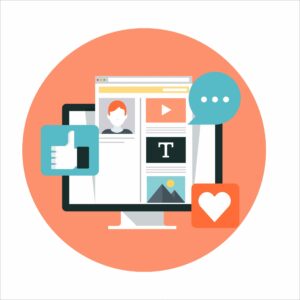If you stay current with articles on marketing or business in general, you cannot miss the pundits discussing the new face of business –technology, connectivity, speed and customization. I am also quite sure many of you, including me at times, are confused as to what this means.
I was listening to a podcast from Brian Solis and he mentioned the term “On-Demand Society” while discussing Uber and its effect on not just business, but the economy in general. His point was that this ever-growing desire from consumers to have things at their fingertips is changing business as we know it.
It is easy to understand this on-demand economy when we think of media consumption and the growth of Netflix, Hulu, HBOGo and every other channel that now has its content on demand. I see the future of this economy in my children, 8 and 9 years old, who are so comfortable accessing their shows or working their online apps across multiple devices. It seems that in the future, they will have no frame of reference to what we are speaking about when we say that one has to wait for something. Slow downloads are painful for them right now. Speed matters.
 I think we are also seeing glimpses of the next generation of the on-demand economy, which I will call the “customization economy.” With services like AirBNB, Open Table, car configurators, customized training programs and so on, there’s concierge service for all! Everyone can now feel special because they are designing their own experience. What struck me then is how this desire for on-demand services will affect the interaction between customers and automotive dealerships.
I think we are also seeing glimpses of the next generation of the on-demand economy, which I will call the “customization economy.” With services like AirBNB, Open Table, car configurators, customized training programs and so on, there’s concierge service for all! Everyone can now feel special because they are designing their own experience. What struck me then is how this desire for on-demand services will affect the interaction between customers and automotive dealerships.
Dealers cannot sit on the sidelines to see if the on-demand economy will succeed or fail before jumping in. I think it is here to stay and will evolve even more. I broached this topic in some workshops I taught and got some typical pushback. I see the automotive dealership as being a service-driven business and have had quite spirited debates with those who believe it is a product-driven business. That can be an article for another day.
If automotive dealerships are truly a service business, they need to be careful not to hastily embrace this new shiny object at the expense of what has been successful in the past. My point is that with this demand for technology and DIY applications, there has to be a very delicate balance between new technology and what will always be important in this type of transaction: the personal touch. Consumers still need the human interaction at some point in their car buying experience, especially when something goes amiss or there is a need for implementation assistance. If each dealership wants to keep their customers long term, then service will be the deciding factor, not that you made their finance form work on an iPad.
I bring this up because what customers really need is access to the team at the dealership. Taking it a step further, the team also needs to consistently check in with the customer. Too often, the internal departmental silos prevent this from happening. One reason is that dealerships’ marketing and sales processes are still stuck in the old thinking that looking out the front door will bring in more leads.
If you are going to succeed in this new arena of sales and service, then using tools that help you connect will be important. Are your sales and service teams connected socially with their clients? Are they aware of a job change from LinkedIn? Now, before everyone thinks I have lost my mind, I am talking about those customers you have serviced and rely on. Maybe not your potential customers (that’s a little stalker-like), but why, as a salesperson, would you not congratulate a customer who got a promotion? Or moved? Dealerships rely on marketing to drive customers and then do a poor job converting because they know the next groups of leads are coming back next week or month.
Dealers cannot just sit back and wait for someone to go to them. There has to be a reason because as we know, the individual dealership is not product-driven anymore. Customers can get your product or service from a variety of places. Therefore, everything your team does to support your “why buy from me” message will be the game changer. You can use technology to connect, but ultimately it’s the person on the other end who is still the most important tool at your disposal.
Are you connecting to your customer base as a person or just selling something new? If the only time customers hear from you is when you want to sell them something, guess what? They won’t take your call.
If you call customers to check in, not just on a birthday, then you come across as someone who is interested in them and their success. That is connecting – not just following a Facebook page. When was the last time you sent an article to a past client that may be of use? That is connecting.
Yet the best customers you already have are often ignored. I know it is a cliché to some, but if you connect with those you have sold to be of service – not to sell service – then you differentiate yourself and connect.
Technology is a great thing. It makes parts of our lives easier. But a word of caution: don’t go too far down the path of hoping automotive customers are fully self-sufficient. There can be a happy medium. Dealers, make sure you have a team ready to help with information and offer your services when applicable to your customers in a connected way. Then, you will really be an on-demand resource for your customers.
TSLA459.02012.13%
GM80.8900.04%
F13.7400.1101%
RIVN18.4051.975%
CYD35.210-0.57%
HMC30.9300.11%
TM208.3004.74%
CVNA455.485-17.245%
PAG167.670-2.64%
LAD344.260-12.39999%
AN210.055-9.61499%
GPI413.740-13.17%
ABG243.640-4.93%
SAH65.320-2.09%
TSLA459.02012.13%
GM80.8900.04%
F13.7400.1101%
RIVN18.4051.975%
CYD35.210-0.57%
HMC30.9300.11%
TM208.3004.74%
CVNA455.485-17.245%
PAG167.670-2.64%
LAD344.260-12.39999%
AN210.055-9.61499%
GPI413.740-13.17%
ABG243.640-4.93%
SAH65.320-2.09%
TSLA459.02012.13%
GM80.8900.04%
F13.7400.1101%
RIVN18.4051.975%
CYD35.210-0.57%
HMC30.9300.11%
TM208.3004.74%
CVNA455.485-17.245%
PAG167.670-2.64%
LAD344.260-12.39999%
AN210.055-9.61499%
GPI413.740-13.17%
ABG243.640-4.93%
SAH65.320-2.09%
Dealers' #1 source for auto industry news, content, coaching & analysis








